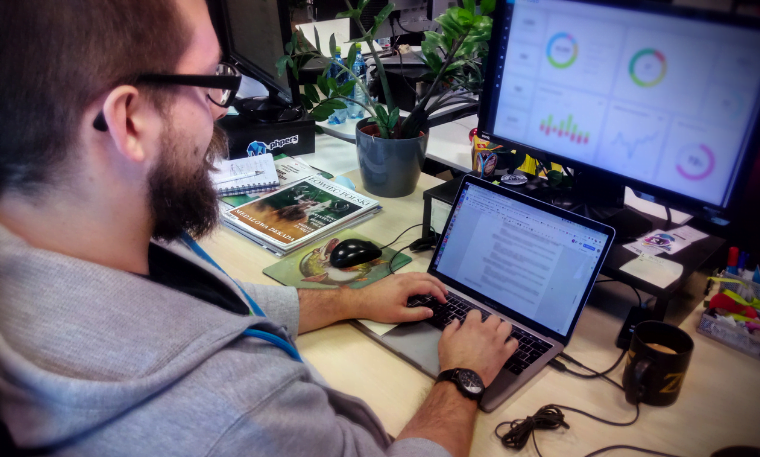



More and more games on the mobile market influences game makers to approach players more consciously. We can react to their needs much better and faster. We often realize that apart from important elements such as gameplay, balance, and graphics, there’s also another equally important one – user experience.
UX is often confused with interface design – UI (User Interface). They are related and certainly shouldn’t work separately. However, UI is only a graphical representation of an interface which enables a player to communicate with a game/app. UX deals with the issue of how a user will interfere with our product. It is also connected with how recipients will react to the implementation of certain features, how to make their contact with our game not only successful from the product point of view but also simple and pleasant.
Unlike other web apps, mobile games have a different life cycle which results in a different methodology of designing user interactions. We encounter many technical limitations. We want to show as much information as possible and at the same time keep the maximum functionality and shorten the path a player has to take to reach a certain place. We want our user to get maximum content having in mind if a player can find his/her way in our app or if he/she can move around it.
It is hard to assess which changes are the best for us but there are some rules to help us to create the right experience.
Setting up targets
At the beginning of designing a game or app we should set up clear targets for each functionality. If we are able to clearly set up player’s target, it’s easier to build a needed path. If at this moment the target seems unclear or the path to it is not fully understandable, it should be revised and redone. Don’t be afraid to discard bad ideas. There will be many of them in the process of designing a big project.
User is the most important!
I think it is one of the most important rules when designing our UX. We need to be aware that we’re not making it for ourselves but for as many users as possible. It is the users that we need to focus on, put ourselves in their place, try to understand them and provide them with as comfortable a product as possible.
Iteration, tests ,and feedback
In F2P games there is no final deadline for the end of development and that’s a huge advantage. It’s an ongoing process very much dependent on players. We come back to the same issues, the same places with many new ideas.
But above all, we come back to these problems with greater knowledge and experience. We can learn from the mistakes we’ve made and we hope that players’ suggestions will help us solve a problem in a much better and effective way.
The Logical chain of events
It is important to us that a player knows where he/she is in the app when using it and how to move around. We should take care of players’ ability to foresee their actions. When players make a choice, they shouldn’t be surprised and surely we don’t want them to feel lost at any moment. We can facilitate it be the logical placement of a game content, proper grouping of functionalities/windows so that players are aware where they can find particular content.
When making an interface, should pay attention to consequences of our choices thanks to which players can learn repeatable schemes quickly. Small animations on our interface have an influence on such experiences. They show players where certain elements “come out” from.
Clarity
Even though we are tempted to show as much information as possible, we should always be careful and remember that we want our players to feel comfortable and it’s the most important. Prioritizing ability of items and issues which are essential for players and which we can move or skip.
Research
Pretty obvious but very often undervalued. In my view, the ability to find inspiration and information is significant in UX. It’s a constant exploration of new solutions and ideas of other designers. Every day we can find many interesting tricks which we can implement in our project in the future.
Of course, these are only very general rules which in my opinion can help to understand UX. I also think that we’re not able to create specific guidelines to follow strictly because you cannot finish (complete) UX, it’s a process and ability to adapt apps to users’ needs.
By: Rafał Danhoffer

Anyone who has ever moved countries, be it for a job, for school, or for…
read more
Design is where it all starts. From a spontaneous idea to a solid concept, followed…
read more
Ten Square Games is proud to join the 2025 edition of the Green Game Jam,…
read more
Ten Square Games Team Ten Square Games’ story began with two visionaries and an office…
read more